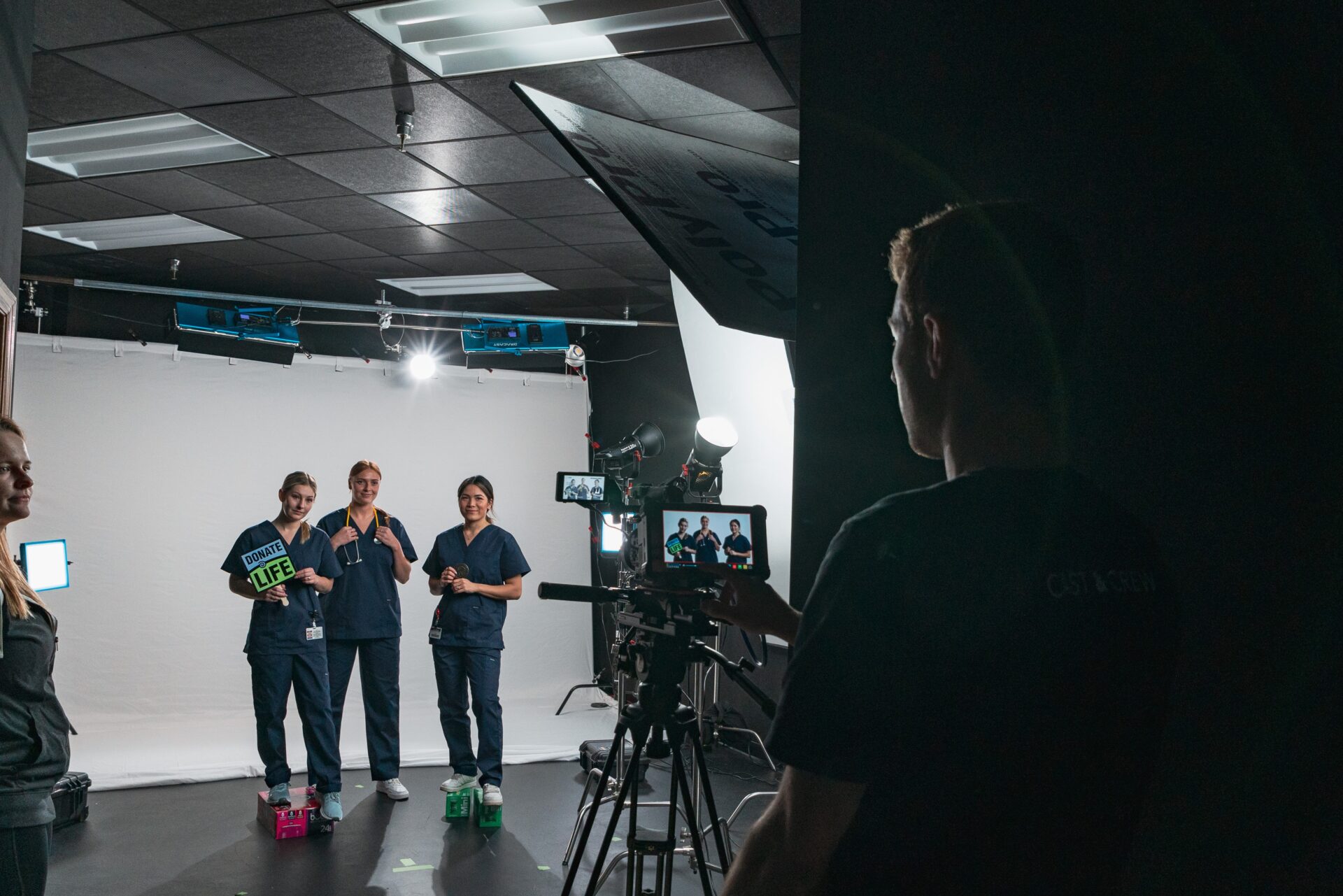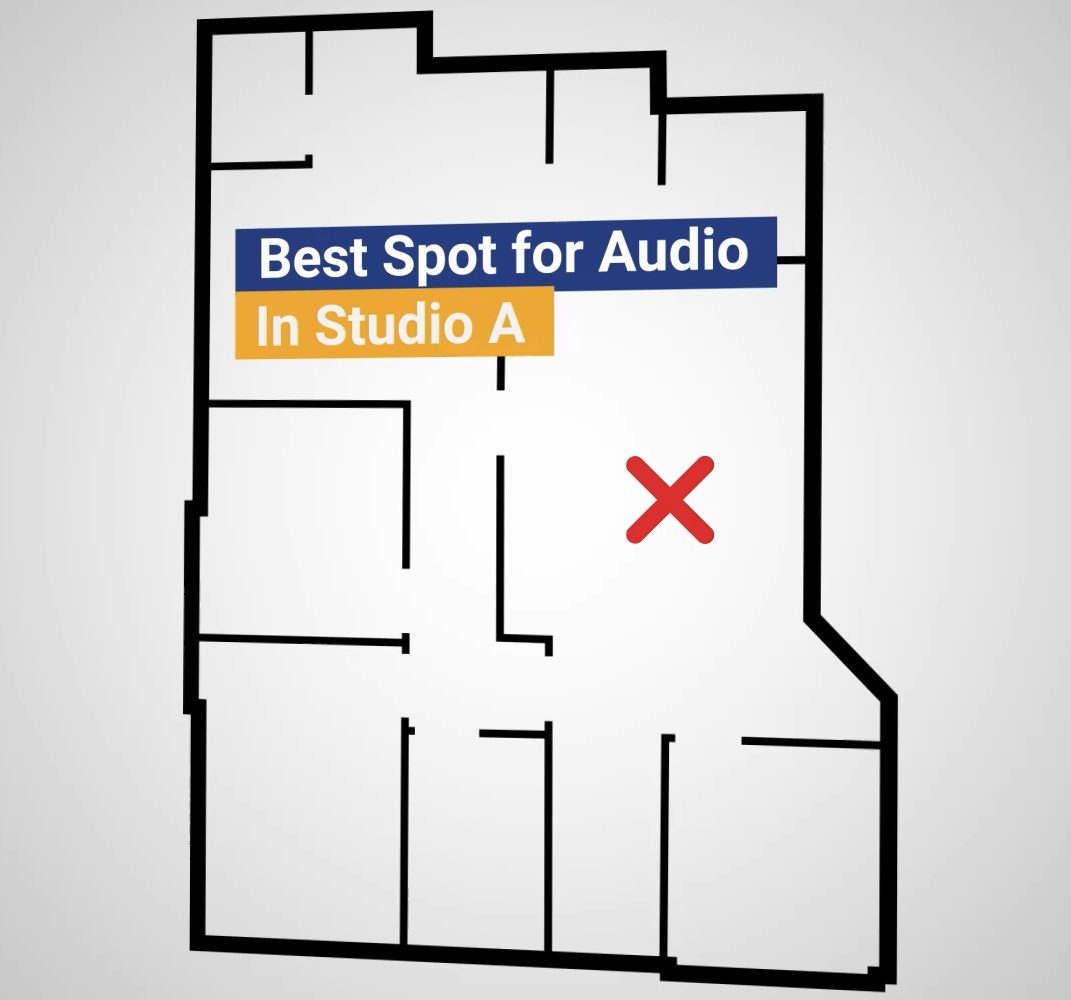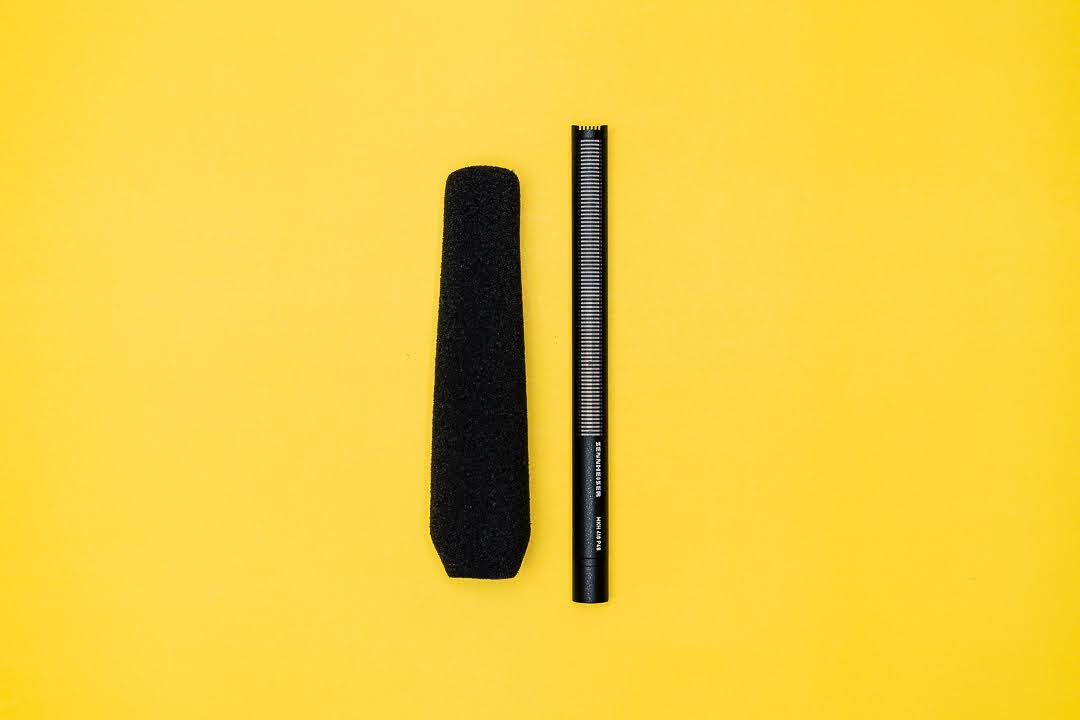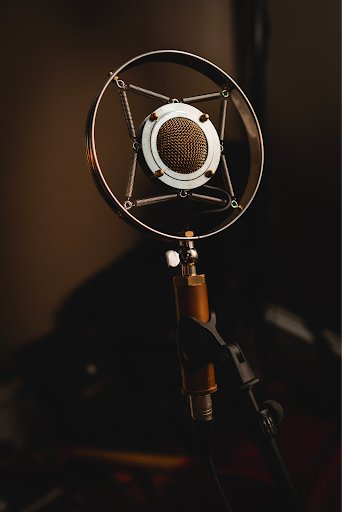Posted by
Dan Passante on
Sep 29, 2022
Posted by
Dan Passante on
Sep 29, 2022
Sometimes in video work, a shot comes out better than you thought.
This is not the case with audio. Good audio never happens by accident.
In Studio A, we have meticulously decided on the best spot to record audio for our in-studio shoots, which didn’t happen overnight… or two nights… or even three.
In order to have professional sounding audio, you need to have the right tools for the job. Let’s take a look at what exactly Studio A has in its arsenal when we’re in our studio and in the field.
Before we get into the hardware we use, what is Studio A?
Simply put, Studio A is where we record videos: Instagram stories, testimonials, brand awareness content, you name it. When someone comes to Akullian Creative with video, animation and design needs, we will employ our space on Wolf Road one way or another to get the job done. By renting from the Anderson Group, we’ve been able to customize our space to get the most out of it for our needs.
Now let’s get into the audio.

With the help of one of our Ace Creative Partners, local audio engineer Julia Norelli, we have been able to make decisions that we are confident will yield the best results when we put them into practice.
From the floor to the ceiling and everything in between, this is what you can expect from the audio in Studio A.
Yes, even the floor is intentional.
The solid construction of our studio’s floor gives the audio some “bounce.” When capturing a sound like a voice in an interview, it should sound natural, and by having some short reverb, this can be achieved.
The ceiling tiles in Studio A were swapped out for two inch thick by two feet long Soundsulate panels. Reflections off the ceiling can be disruptive to sound capture. Sometimes treating your ceiling can actually fix more problems faster than just having wall panels.
Here’s a before and after of our ceiling’s sound treatment.
Before ceiling panels:

After ceiling panels:


Studio A is equipped with Auralex sound panels on the walls. We decided to go with fiberglass Auralex panels because of the performance- absorbing sound from 250 Hz to 4000 Hz.
Parallel walls can lead to unwanted reflection, but with the help of sound panels, noise from inside and outside the room are more controlled and diffused.

“X” marks the spot for the best place for audio in Studio A. How do we know this?
Each room has a room mode (or frequency) that will pop out above the rest. This will not be accentuated as much one third of the way into the room, which explains why our “X” is on this spot. Keep in mind: where your room mode null point is will depend on the size and shape of the room.
This setup leads to a smoother edit in post-production. When the audio recorded at the source is in a good place, things like the noise reduction and distortion may not require a lot of fixing. With less audio to fix, we can get right to the creative aspect of editing faster; an idea that is music to everyone’s ears in video editing.
Take a look at our setup in action for an interview with Craig Peterson for the upcoming film, Craig the Leg. Check out more of Craig and his story here.

Within Studio A, we’ve added Studio V, our vocal booth that has grown from a weekend project into a professional audio booth. The booth sounds great, especially with our Warm Audio 87, a mic that emulates the classic Neumann U87i Mic.
Don’t believe us? Here’s what the mic sounds like in the studio:
Now that our studio is set up, let’s take a look at the audio equipment we use.
Inside Studio A, we use the Sennheiser MKH 50 P48. This mic is hypercardioid, meaning in the studio, this mic picks up what it is directly pointed at. Most of the time for us, this means the MKH 50 helps us capture a voice. When the voice is the only thing picked up by the mic, it makes the editing process smoother with less background noise to take out.
We use a Zoom F8 Mulitrack Field Recorder when we need to capture pro audio. This is optimal for us because we can use it inside and outside. With 8 preamps, we have more than enough to record all the audio we need.

There are a number of mics we use to capture audio, depending on the scenario. One of the mics in our collection is the Sennheiser MKH 418 P48, a mic that we employ for outdoor use due to the pickup pattern. A longer mic capsule allows for a more narrow pickup which can weed out distracting background noise very well.
In September, we put a video together for P.E.F.’s Labor Parade in Albany. Our audio engineer Julia brought our field recorder and Sennheiser MKH 418 to capture interviews and crowd sound. Take a look at the final product here and take note of the audio.
Follow us @akulliancreative on Instagram and Facebook. Like us on LinkedIn. Check us out on the web here and scroll to the bottom to subscribe to our newsletter. Check out our blogs on our Aces, projects, and other helpful tips for the best video, animation and design in your project.
